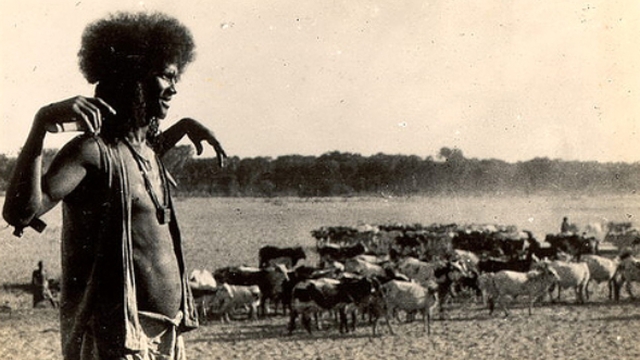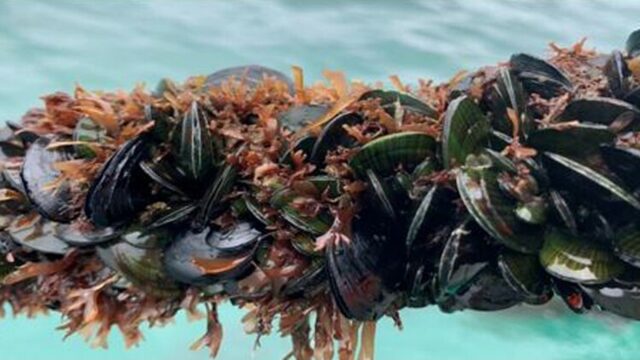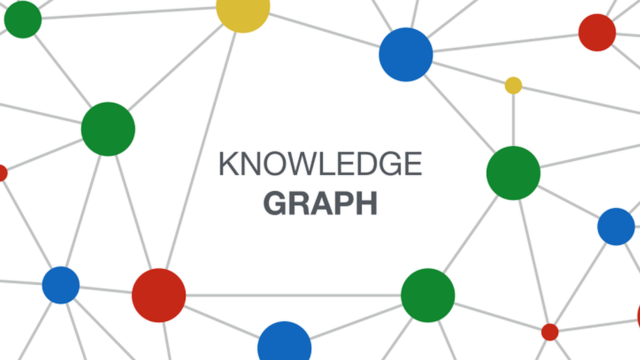
The case for indigenous knowledge systems and knowledge sovereignty (part 6): Key debates
This article is part 6 of a series of articles putting forward the case for indigenous knowledge systems (IKS) and knowledge sovereignty, featuring selected excerpts from the book Knowledge Sovereignty among African Cattle Herders.
This … [part of the book Knowledge Sovereignty among African Cattle Herders] provides a brief, yet hopefully balanced, overview of some of the specific debates being waged between proponents of indigenous knowledge and of scientific knowledge in the fields of food procurement, agriculture, food security and knowledge systems. The battle between indigenous and scientific knowledge is being played out in food production, namely, in the related areas of food security and food sovereignty.
The pro-science proponents or the evangelists of the Green Revolution school would stress the insufficiency of indigenous knowledge to address growing food needs, and that indigenous knowledge perpetuates systems of repression. These points not only need to be criticised but rebutted by those who care about the sustainability and resilience of indigenous knowledge and believe in its sovereignty as the power base of the poor and marginalised.
Are indigenous knowledge systems sufficient to address modern food needs?
Indigenous knowledge systems, as discussed earlier, are and have been embedded in specifc cultural and regional contexts, and have been formed through a dynamic and negotiated process within labour processes specifc to that area. But, in our increasingly integrated global system of commodities trade, have these knowledge systems reached their sell-by date? When agricultural practices on one continent affect consumers on another, when global population is expected to increase by 47 per cent, skyrocketing from 6.1 billion in 2000 to 8.9 billion in 20501, when policy makers are fundamentally dissociated from the labour process, and when producers are segregated from the means of production, can such systems of knowledge retain any currency?
To start off, let us eschew issues of economics and politics and concentrate solely on the inevitable population increase. As a result of it, governments across the globe are requiring more and more food to feed their hungry populations, but ways of producing food, which have served these populations well in the past, simply are not up to the task of addressing this new strain. This sentiment is no more clearly elucidated than by Prakash: ‘Traditional technologies are reaching their limits and
we need to examine the vast potential of new technologies, such as genetic improvement of crop plants, with an open mind’ 2. However, Prakash was not advocating an outright abandonment of traditional agricultural practices; he was simply asserting that under current population pressures, these traditional practices are becoming strained.
Proponents of indigenous knowledge, however, would be quick to rebut this, because they see IKS as an evolving knowledge system that adapts. Firstly, they argue that the fact that traditional practices have been used over generations does not mean they are stuck in the past and need to be completely overhauled with drastic measures, such as genetic modification. Traditional pastoralist practices can, for example, be augmented with more modern technology and fill a key role in food security3.
Secondly, they would object, in defence of traditional practices, that the problem at hand is not the overall amount of food, but rather lack of access to existing food. There is enough food, supplied either locally or through imports, but people do not have the ability to purchase or otherwise obtain it legally. They would cite study after study, from the World Bank4 to the United Nations Food and Agriculture Organization5 to locale-specific research6, all decrying lack of access, rather than global food supply, as the main culprit of undernutrition and starvation. Therefore, it is an issue of profiteering and manipulating markets rather than insufficient supply.
Before we go into the next critique supporting the scientific paradigm in attempting to obtain and retain food security and sovereignty, let us briefly indulge in a subcategory of this particular dialogue, mentioned by Prakash, that of increasing the quantity of food through genetic modification. This specifc sub-debate will be of particular relevance in Chapter 5 [of the book Knowledge Sovereignty among African Cattle Herders] regarding the selective genetic manipulation of cattle populations. Being a political, economic, environmental, and for many a moral, hot-button, genetically modified (GM) foods are frequently the subject of debate. Although the subject is far too nuanced and intricate for us to go into in any depth here, we can make several broad strokes about the war of words, just to get a feel for the issue. Almost entirely centring on increasing the amount of food produced, GM advocates extol
the advantages of being able to modify crops to grow in inhospitable regions previously unable to support that crop7. They also praise GM as being quite healthy: when appropriately applied, the genetic modification of crops can lessen the need for chemical inputs such as pesticides, herbicides and fungicides8, and can make up shortfalls in diet.
In the context of the Horn of Africa region, Salih9 argues:
Whereas livestock development depends heavily on imported technology, knowledge and infrastructure, [pastoral production cultures are] based on local knowledge with very little use of modern inputs. The contradiction[s] between these two cultures of pastoral production are compounded by an interest gap between the pastoralists and the planners. The planners are educated and trained to appreciate modern techniques of production with little or no interest in […] cultural factors of production. These contradictions also relate to the planners’ perception of the methods capable of developing the livestock industry, which are at times incompatible with the pastoralists’ objectives and organization of production.
As demonstrated above, there is clearly no shortage of arguments for and against indigenous knowledge systems in regard to their ability to address modern food needs and quantities, ensuring food security from the household level up to the national and regional levels.
Livestock throughout the African drylands will continue to play a major role in the national economy, contributing well beyond the estimated 25 per cent of agricultural GDP. Behnke10 calculates that pastoralism represents about 45 per cent of Ethiopia’s agricultural GDP, which in turns accounts for 42 per cent of national GDP.
The livestock sector is itself a major source of foreign exchange and industrial raw materials (meat, milk, eggs, hides, skins and fibre) in the Intergovernmental Authority on Development (IGAD) member states. For instance, about 20 per cent of agricultural exports in Sudan are livestock-based, hides and skins are Ethiopia’s second biggest export, and in Somalia livestock and livestock products account for 80 per cent of exports in normal years11 12.
Exports have been on the increase since Eritrean independence as a sovereign country in 1993 and, regionally, pastoralists in the Kassala State of eastern Sudan have made significant contributions to the state and regional economies. Reliable data is difficult to get as most of the major livestock trade is conducted informally, but the following data gives a general overview of the sector’s recent contributions to the country’s economic and food security.
The total value of the livestock sold in Sudan for local consumption or export is 76 million Sudanese pounds (SDG)13 (equivalent to about US$38 million), and this is as a result of pastoralist production. Revenues from the camel trade are highest, followed by cattle, sheep and goats. The goat contribution to trade is underestimated because most goats are slaughtered for home use and therefore not reported14. Cattle, which are not exported, contribute 23 million SDG (30 per cent); camels for local consumption and export contributed 32 million SDG (42 per cent); sheep contributed an estimated 20 million SDG (26 per cent); and goats for local consumption and export comprised 1.1 million SDG (2 per cent).
Figures from a 2013 USAID market study of Somaliland ‘give an estimate of 2.352 million sheep and goats exported through the Berbera Port, Somaliland, with sheep and goats accounting for 91 per cent of animal exports’ 15. Based on an average price of US$70, the estimated total value would exceed US$160 million, with tax revenue totalling around US$8.5 million, or approximately a third of the Somaliland government’s total revenue. It is important to note that this is the financial contribution of traditional mobile pastoralism, not the modern livestock industry.
It should also be mentioned that ‘a large proportion of Somaliland’s livestock exports originate from Ethiopia (an estimated 50 per cent of goats and sheep)16, and the livestock trade is characterised by a high degree of regional integration. Somaliland’s herders seasonally make use of important cross-border grazing and water resources’
17.
Do indigenous knowledge systems perpetuate socio-cultural systems of repression and segregation?
A closer look at the second critique by the green revolutionaries of indigenous food production knowledge is quite revealing. The complex debates on segregation of work roles based on race, religion, age, sex, gender or other such distinctions are beyond the scope of this book; our focus will be on livestock-based food production, which has, for the most part, been a segregated practice. As it is particularly relevant to the following chapters [of the book Knowledge Sovereignty among African Cattle Herders], let’s take the case of cattle and camel herding in the Horn of Africa: cattle and camel production among pastoral people in sub-Saharan Africa is almost exclusively a male-dominated enterprise, women being excluded in a variety of ways, including, but not only, politically, socially and economically.
Among many pastoralist communities, pastoralist culture excludes women from important roles in herd management and livestock ownership. Women are brought up to respect and submit to the leadership of men, and continue to be subjected to harmful practices such as female genital mutilation (FGM) and forced marriages in order to maximise bride-wealth payments18.
Kipuri and Ridgewell19 go on to explain how women are excluded socially, economically and politically in pastoralist societies in Ethiopia, Kenya, Tanzania and Uganda. Advocates of modern, scientific pastoral practices would certainly balk at this obvious inequality.
From the author’s long observations, pastoral communities, including the Beni-Amer, are generally marginalised in terms of public policy and political representation, but women among the Beni-Amer are on the margins of the marginalised because of the social, cultural and religious attitudes deeply rooted in the patriarchal system among the Beni-Amer. Beni-Amer women do not herd or sell cattle, but manage small stock (sheep, goats, poultry), process animal products ranging from leather to dairy products, produce an array of artefacts for home decoration or sale, and take care of the children and the old folk when the men migrate for several months during the long dry season. So the critical role of women among the pastoral communities, including their IK, deserves a proper study in its own right, but that is beyond the scope of this book.
Given the changing nature of pastoralism and the encroachment on pastoral areas, pastoralist communities are pursuing alternative or complementary means of livelihood, and women are taking on new roles. Diversified livelihood strategies are empowering women and can assist in conserving biodiversity through agricultural practices, as well as providing economic and health advantages.
Are indigenous knowledge methods in food production geographically and culturally suitable, while ‘cookie-cutter’ global scientific methods are not?
As discussed earlier, indigenous knowledge is a negotiated process, which evolved through the labour process within a certain geographical and cultural context. The argument logically flows that local knowledge systems and the practices built on those systems are most in harmony with the surroundings, and therefore are a more suitable, tailor-made method of food provision. It is under such circumstances that a non-indigenous knowledge system which has been imposed on a people and region may not work, and indeed could at times do more harm than good. Let us take Saudi Arabia as an example: with only 1.6 per cent of its land area being arable (figure for 2014; World Bank20), high-intensity agriculture is not something traditionally done there. However, because of the 1970s OPEC embargo, Saudi Arabia began a massive initiative to irrigate its land and produce grain because it had more money to invest in this. By pumping huge amounts of water from its underground aquifers, it managed to increase its grain harvest from a few thousand tons in the mid-1970s to 5 million tons in 199421. However, doing this strained a limited water supply and grain output crashed to less than 2 million tons in 1996. Although bouncing back, Saudi Arabia still suffers from water scarcity today, with the agricultural sector responsible for 86.5 per cent of total water consumption22.
An immediate counterargument, however, invariably springs up, namely that the world is not local any more. What may have been suitable in an isolated environment may not be appropriate in a more globalised system. Suffice it to say that local actions (especially in such politically and economically loaded enterprises as food production) now have global effects. Therefore local knowledge, which may only work in one context, is insufficient, and these global cookie-cutter methods,
although not without their ill effects, simply reflect the global nature of society now and are the way forward. Anecdotally, Saudi Arabia is now involved in an extremely non-local solution to its local resource problems, namely land acquisitions (commonly referred to as land grabs) beyond its shores in countries such as other Gulf countries, China, India, South Korea, the United Kingdom and the United States. These land grabs have been getting worse since the global financial and food crises of 2008. Work by Cotula et al.23 clearly demonstrates the environmental damage such grabs are causing in some sub-Saharan countries.
What are the economic and health implications of low-input versus high-input methods?
Proponents of indigenous knowledge also champion traditional agricultural, and, likewise, food-provision methods, as they tend to require fewer and lower-cost inputs than modern methods24. Boxall, Hardy, Beulke et al.25 cite various studies 26 27 28, drawing links between agricultural pesticides and other chemicals and all sorts of maladies such as Parkinson’s disease, cancer, ‘respiratory malformation, congenital abnormalities, urogenital and musculoskeletal anomalies, and changes in the male:female sex ratio of offspring’ 29.
In The Death of Ramón González, Wright30 looks critically into the health implications of modern chemical-based agriculture. He laments the high-intensity and high-input agricultural practices which have increasingly been enforced in Mexico since the adoption of the North American Free Trade Agreement (NAFTA). He states that indigenous farming methods have given way to more severe monocropping and high use of toxic chemical inputs such as pesticides, herbicides and fungicides. Coupled with a lack of enforcement of safety standards, such as proper handling and appropriate dosages of inputs, this modernist intervention is having a severe impact on those working in the industry. Wright tells, among other things, how workers in the field are routinely and repeatedly sprayed with hazardous chemicals from crop dusters flying above, and suffer the health consequences from such repeated exposure.
Furthermore, rather than promoting economic and food sovereignty, increased chemical inputs are actually tightening the grip of the producers of these chemicals in the North, as more and newer chemical inputs and machinery are constantly needed as the old ones lose their potency, which leads to a loss of sovereignty among the food producers31. Additionally, Fitting32 describes the loss of the next generation of potential agriculturalists in Mexico to outmigration. She explains how the current global trade regime and NAFTA have led once thriving agricultural communities to become dependent on remittances from nationals working abroad, which is ravaging the local economy.
As a counter, champions of modernism would consider the above arguments to be an overgeneralisation and point to the work done in the scientific community to reduce inputs in agriculture while keeping outputs high, for example the coating of seeds with fertilizers rather than mass sprayings33. As for the migration issue, they would explain this as a simple maximisation of the migrants’ own utility (happiness, opportunities, etc.) and something completely natural.
Next part (part 7): Hybrid knowledge systems: are they feasible?
Article source: Knowledge Sovereignty among African Cattle Herders is licensed under CC BY 4.0.
Header image source: Tigre man from Barka Valley is in the Public Domain. The Beni-Amer people probably emerged in the fourteenth century AD from the intermixing of the Beja and the Tigre.
See also: Cultural awareness in KM.
References and notes:
- UNDESA, Population Division. (2004). World Population to 2300. New York: United Nations. ↩
- Prakash, C. S. (1999). ‘Feeding a World of Six Billion.’ AgBioForum 2(3&4): 223–4. ↩
- Krätli, S., Huelsebusch, C., Brooks, S. and Kaufmann, B. (2013). ‘Pastoralism: A
Critical Asset for Food Security under Global Climate Change.’ Animal Frontiers 3(1): 42–50. ↩ - World Bank. (2012). Africa Can Help Feed Africa: Removing Barriers to Regional Trade in Food Staples. (Lead author Paul Brenton.) Washington, D.C.: World Bank. Available at: https://openknowledge.worldbank.org/handle/10986/26078, accessed 4 November 2017. ↩
- FAO, WFP and IFAD. (2012). The State of Food Insecurity in the World 2012: Economic growth is necessary but not sufficient to accelerate reduction of hunger and malnutrition. FAO. Rome. ↩
- Brown, M.E. and Funk, C.C. (2010). ‘Early Warning of Food Security Crises in Urban Areas: The Case of Harare, Zimbabwe, 2007.’ In P. Showalter and Y. Lu (eds), Geospatial Techniques in Urban Hazard and Disaster Analysis, 229–41. Dordrecht: Springer. ↩
- Islam, M.S., Azam, M.S., Sharmin, S., Sajib, A.A., Alam, M.M., Reza, M.S., Ahmed. R. and Khan, H. (2013). ‘Improved salt tolerance of jute plants expressing the katE gene from Escherichia coli.’ Turkish Journal of Biology 37(2): 206–11. ↩
- Pandey, A., Kamle, M., Yadava, L. P., Muthukumar, M., Kumar, P., Gupta, V., Ashfaque, M. and Pandey, B. K. (2010). ‘Genetically Modifed Food: Its Uses, Future Prospects and Safety Assessments.’ Biotechnology 9(4): 444–58. ↩
- Salih, M.A.M. (1991). ‘Livestock Development or Pastoral Development?’ In P. T. W. Baxter (ed.), When the Grass is Gone: Development Intervention in African Arid Lands, 54.
Uppsala: Scandinavian Institute of African Studies. ↩ - Behnke, R. (2010). ‘The Contribution of Livestock to the Economies of IGAD Member States. Study Findings, Application of the Methodology in Ethiopia and Recommendations for Further Work.’ IGAD LPI Working Paper No. 02 – 10, Djibouti. ↩
- Fahey, D. (2007). ‘The Political Economy of Livestock and Pastoralism in Sudan.’ IGAD LPI Working Paper no. 06–08. ↩
- Sandford, J. and Ashley, S. (2008). Livestock, Livelihoods and Institutions in the IGAD Region. IGAD LPI Working Paper no. 10–08. FAO. Addis Ababa. ↩
- £1 equals approximately 8.5 SDG (Sudanese pounds) at the time of writing. ↩
- Fre, Z. and Tsegay, B.T. (2016). ‘Economic Contribution of Pastoral and Agropastoral Production to Food Security and Livelihoods Systems in Africa: The Case of Eastern Sudan, Eritrea and Western Ethiopia in the Horn of Africa.’ In Amare Desta, Mentesnot Mengesha and Mammo Muchie (eds), Putting Knowledge to Work: From Knowledge Transfer to Knowledge Exchange, 148–79. Trenton, NJ: Africa World Press. ↩
- USAID. (2013). ‘Somali livestock end market study.’ Partnership for Economic Growth paper presented on 2 July 2013, Zen Garden, Nairobi, Kenya. ↩
- Majid, N. (2010). ‘Somaliland, Ethiopia and Djibouti’. In Hussein A. Mahmoud, Nisar Majid. Luca Ciabarri, Cedric Barnes and Sally Healy, ‘Livestock Trade in the Horn of Africa.’ Africa Programme Seminar Report, Chatham House, London. ↩
- PENHA. (2013). ‘Pastoralism in Somaliland: Society, Economy & Environment.’ Pastoral and Environmental Network in the Horn of Africa (PENHA). ↩
- Kipuri, N. and Ridgewell, A. (2008). A Double Bind: The Exclusion of Pastoralist Women in the East and Horn of Africa. London: Minority Rights Group International. ↩
- Kipuri, N. and Ridgewell, A. (2008). A Double Bind: The Exclusion of Pastoralist Women in the East and Horn of Africa. London: Minority Rights Group International. ↩
- World Bank. (undated). ‘Arable land (% of land area).’ Available at: https://data.worldbank.org/indicator/AG.LND.ARBL.ZS?locations=SA, accessed 4 November 2017. ↩
- Postel, S. (1999). ‘When the World’s Wells Run Dry.’ World Watch 12(5): 30–8. ↩
- Alzahrani, K.H., Muneer, S.E., Taha, A.S. and Baig, M.B. (2012). ‘Appropriate Cropping Pattern as an Approach to Enhancing Irrigation Water Efficiency in the Kingdom of Saudi Arabia.’ Journal of Animal and Plant Sciences, 22(1): 224–32. ↩
- Cotula, L. (2013). The Great African Land Grab? Agricultural Investments and the Global Food System. London and New York: Zed Books. ↩
- Lwoga, E.T., Ngulube, P. and Stilwell, C. (2010). ‘Managing Indigenous Knowledge for Sustainable Agricultural Development in Developing Countries: Knowledge Management Approaches in the Social Context.’ International Information & Library Review 42(3): 174–85. ↩
- Boxall, A.B.A., Hardy, A., Beulke, S., Boucard, T., Burgin, L,. Falloon, P.D., Haygarth, P.M., Hutchinson, T., Kovats, R.S., Leonardi, G., Levy, L.S., Nichols, G., Parsons, S.A., Potts, L,. Stone, D., Topp, E., Turley, D.B., Walsh, K., Wellington, E.M.H. and Williams, R,J. (2009). ‘Impacts of Climate Change on Indirect Human Exposure to Pathogens and Chemicals from Agriculture.’ Environmental Health Perspectives 117(4): 508–14. ↩
- Ascherio, A., Chen, H., Weisskopf, M.G., O’Reilly, E., McCullough, M.L., Calle, E.E., Schwarzschild, M.A. and Thun, M.J. (2006). ‘Pesticide Exposure and Risk for Parkinson’s Disease.’ Annals of Neurology 60(2): 197–203. ↩
- López, O., Hernández, A.F., Rodrigo, L., Gil, F., Pena, G., Serrano, J.L., Parrón, T., Villanueva, E. and Pla, A. (2007). ‘Changes in Antioxidant Enzymes in Humans with Long-Term Exposure to Pesticides.’ Toxicology Letters 171(3): 146–53. Available at: http://europepmc.org/abstract/med/17590542, accessed 4 November 2017. ↩
- Stillerman, K.P., Mattison, D.R., Giudice, L.C. and Woodruff, T.J. (2008). ‘Environmental Exposures and Adverse Pregnancy Outcomes: A Review of the Science.’ Reproductive Sciences 15(7): 631–50. ↩
- Boxall, A.B.A., Hardy, A., Beulke, S., Boucard, T., Burgin, L,. Falloon, P.D., Haygarth, P.M., Hutchinson, T., Kovats, R.S., Leonardi, G., Levy, L.S., Nichols, G., Parsons, S.A., Potts, L,. Stone, D., Topp, E., Turley, D.B., Walsh, K., Wellington, E.M.H. and Williams, R,J. (2009). ‘Impacts of Climate Change on Indirect Human Exposure to Pathogens and Chemicals from Agriculture.’ Environmental Health Perspectives 117(4): 508–14. ↩
- Wright, A. (2005). The Death of Ramón González: The Modern Agricultural Dilemma, rev. edn. Austin: University of Texas Press. ↩
- Neuman, W. and Pollack, A. (2010). ‘Farmers Cope with Roundup-Resistant Weeds.’ New York Times, 3 May. Available at: http://www.nytimes.com/2010/05/04/business/energy-environment/04weed.html, accessed 4 November 2017. ↩
- Fitting, E. (2006). ‘Importing Corn, Exporting Labor: The Neoliberal Corn Regime, GMOs, and the Erosion of Mexican Biodiversity.’ Agriculture and Human Values 23(1): 15–26. ↩
- Fukuda, M., Nagumo, F., Nakamura, S. and Tobita, S. (2012). ‘Alternative Fertilizer Utilizing Methods for Sustaining Low Input Agriculture.’ In Roland Nuhu Issaka ed.), Soil Fertility. https://www.intechopen.com/books/soil-fertility/alternative-fertilizer-utilizing-methods-for-sustaining-low-input-agriculture (accessed 4 November 2017). ↩






